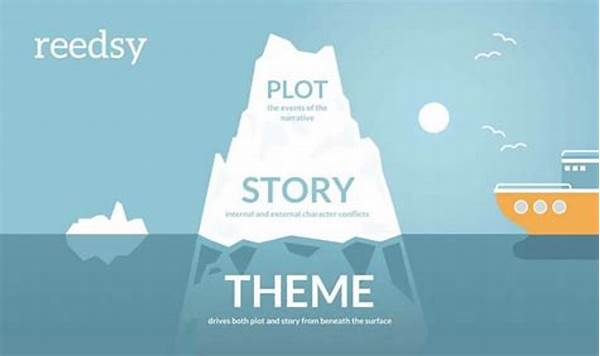Storytelling, an ancient craft stretching back to the dawn of human civilization, is shaped by various narrative elements that captivate audiences across generations. A notable aspect of storytelling is the recurring motifs found in tales worldwide, which function as identifiable themes or symbols that recur throughout various forms of narratives. These motifs provide structure to stories, allowing the audience to connect with the narrative in a deeper, more meaningful way.
Read Now : Measuring Brand Growth Through Influencers
The Power of Archetypes
In the realm of recurring motifs in storytelling, archetypes stand out as universal patterns, persisting through countless tales across cultures. Archetypal characters like the hero, the mentor, and the trickster are examples that repeatedly appear in narratives, acting as pillars within the story structure. These characters serve as familiar touchstones for readers or viewers, creating a sense of connection and continuity with the narrative.
These motifs allow stories to resonate on a universal level, transcending cultural and linguistic boundaries. For instance, the hero’s journey, as conceptualized by Joseph Campbell, is a narrative motif found in numerous legends and myths, illustrating the transformative journey of an ordinary individual into greatness. This template offers audiences a sense of familiarity while allowing storytellers the freedom to innovate within its structure. As such, recurring motifs in storytelling not only unify narratives across different cultures but also provide a springboard for creative expression.
The consistency provided by these motifs enables storytellers to weave complex narratives that resonate with fundamental human experiences. They engage audiences by appealing to collective unconscious imagery and experiences, often evoking a profound emotional response. This psychological engagement underscores the enduring power of recurring motifs in storytelling, highlighting their role in the ever-evolving tapestry of human narrative traditions.
Elements of Familiarity
1. Journey Motifs: Recurring motifs in storytelling often include journeys, symbolizing transformation and growth. Narratives frequently explore the physical or metaphorical journey of a character, emphasizing change.
2. Good versus Evil: This classic motif depicts the eternal struggle between opposing forces. The motif underscores moral lessons and often concludes with the triumph of good.
3. The Mentor: Many stories feature a mentor guiding the protagonist, providing wisdom and support. This motif represents knowledge transfer and the importance of guidance.
4. The Trickster: Often used for humor or satire, tricksters challenge norms and question authority. Their actions frequently result in unexpected outcomes.
5. Love and Sacrifice: Love stories often incorporate sacrifice, illustrating the depth of feeling and the inherent complexities of human relationships.
Symbolism and Themes
Recurring motifs in storytelling often rely heavily on symbolism and thematic elements that speak to universal experiences. These motifs serve a dual purpose: they communicate deeper meanings and enhance the richness of the narrative. Symbols, such as the dark forest representing the unknown or the phoenix symbolizing rebirth, serve as effective storytelling tools. By employing symbolism, authors offer layers of interpretation, inviting the audience to engage with the story on multiple levels.
Themes associated with recurring motifs often address fundamental questions of existence. Themes like redemption, the hero’s journey, or the quest for knowledge resonate with audiences because they reflect shared human experiences and desires. When executed effectively, these motifs elevate the narrative, leaving a lasting impact on those who engage with the story.
Additionally, recurring motifs in storytelling create continuity within and across narratives. They serve as anchors, helping audiences navigate complex storylines while maintaining a connection to the underlying message. This interconnectedness underscores the narrative’s relevance and provides a platform for exploring complex ideas within an accessible framework. Through this synthesis of symbolism and theme, recurring motifs in storytelling remain central to the art of narrative construction.
Recurring Motifs and Contemporary Storytelling
1. Adaptability: Recurring motifs in storytelling demonstrate adaptability, evolving with contemporary narratives to address modern themes while retaining their core essence.
2. Cultural Interpretation: These motifs are interpreted uniquely across cultures, providing insight into societal values and beliefs.
3. Narrative Tradition: They maintain continuity within literary and cinematic traditions, bridging past and present storytelling techniques.
Read Now : Best Practices In Instagram Campaign Optimization
4. Engagement: Motifs provoke emotional and intellectual engagement, prompting audiences to reflect on personal and collective experiences.
5. Innovation: While rooted in tradition, contemporary storytellers reinterpret motifs, infusing fresh perspectives and creativity.
6. Moral Exploration: Recurring motifs often facilitate moral exploration, challenging audiences to consider ethical dilemmas presented within narratives.
7. Universal Appeal: The universality of these motifs ensures their relevance across diverse audiences, allowing them to resonate globally.
8. Structural Foundation: They provide a structural foundation, allowing for the seamless integration of various narrative elements.
9. Connection and Identity: Motifs reinforce connections between audience and story, helping individuals form a sense of identity through storytelling.
10. Narrative Potential: The narrative potential offered by these motifs inspires generations of writers and creators to continue exploring their depths.
Interpreting Recurring Motifs
Finally, understanding recurring motifs in storytelling requires an exploration of their interpretative possibilities. These motifs are not static; they transform with each retelling, inviting new interpretations. Whether through subtle variations in a character’s journey or innovative twists on an age-old theme, storytellers play a crucial role in breathing new life into these motifs, ensuring their relevance and resonance for contemporary audiences.
Each retelling offers an opportunity for reflection, encouraging the audience to glean new insights into familiar narratives. This reinterpretation is key to the longevity of recurring motifs in storytelling, fostering a dynamic relationship between narrative and audience. While grounded in tradition, these motifs remain open to reimagining, allowing storytellers to challenge conventional perspectives and delve into uncharted narrative territories.
Moreover, recurring motifs spark conversations between past and present, tradition and innovation. They act as a bridge, seamlessly connecting the wisdom of ancient narratives to modern sensibilities. Through this dialogue, recurring motifs in storytelling continue to inspire and captivate, inviting audiences to explore the rich tapestry of human storytelling anew.
The Continuing Influence of Motifs
As we conclude this exploration of recurring motifs in storytelling, it is important to acknowledge their enduring presence and continuing influence. From ancient epics to contemporary blockbusters, these motifs are ever-present, offering audiences a familiar anchor amidst the diverse and ever-evolving storytelling landscape.
For authors and creators, engaging with recurring motifs in storytelling provides an opportunity to tap into a rich cultural and historical legacy. By drawing upon these universal elements, storytellers can craft narratives that resonate deeply with audiences, providing both entertainment and enlightenment. Through this process, timeless motifs continue to shape and define the art of storytelling, ensuring its vitality for generations to come.



